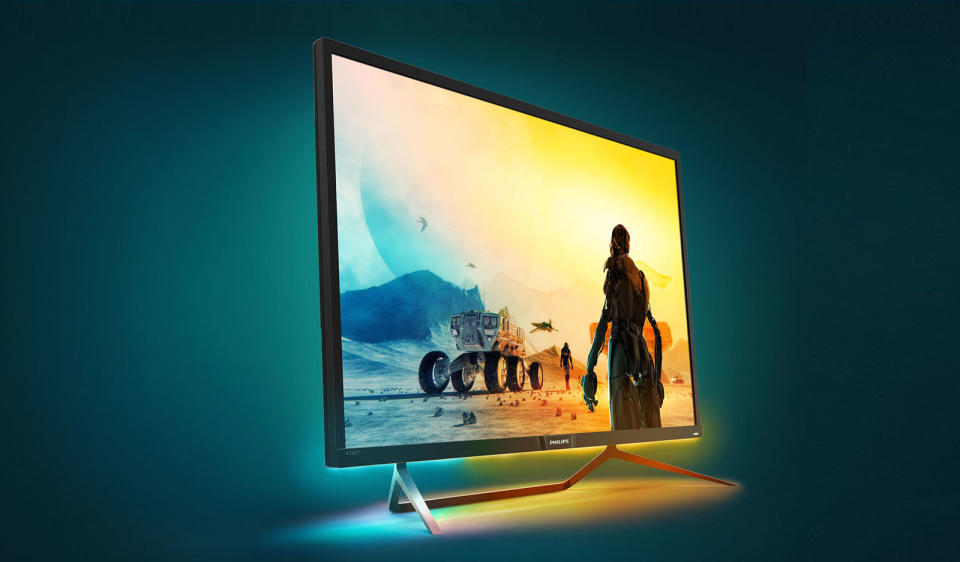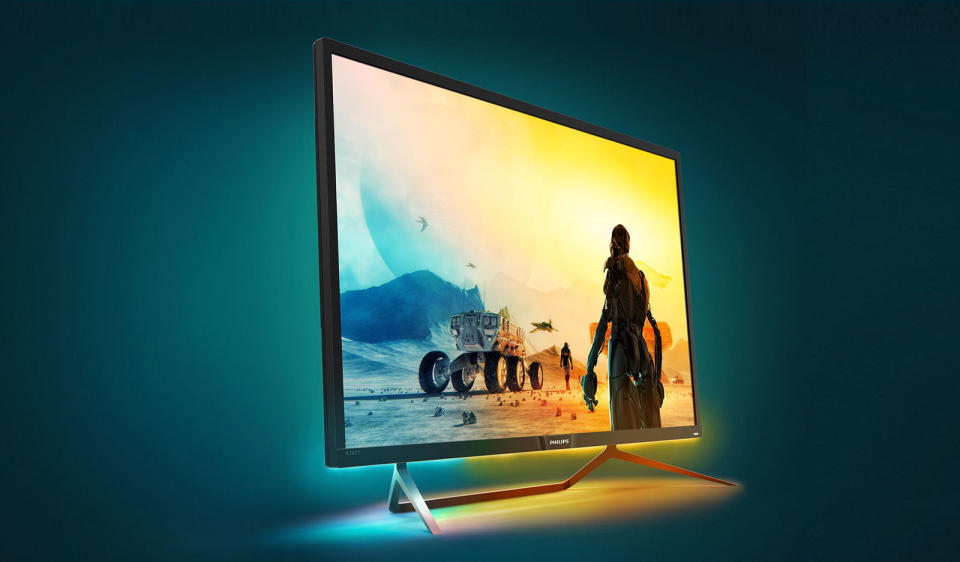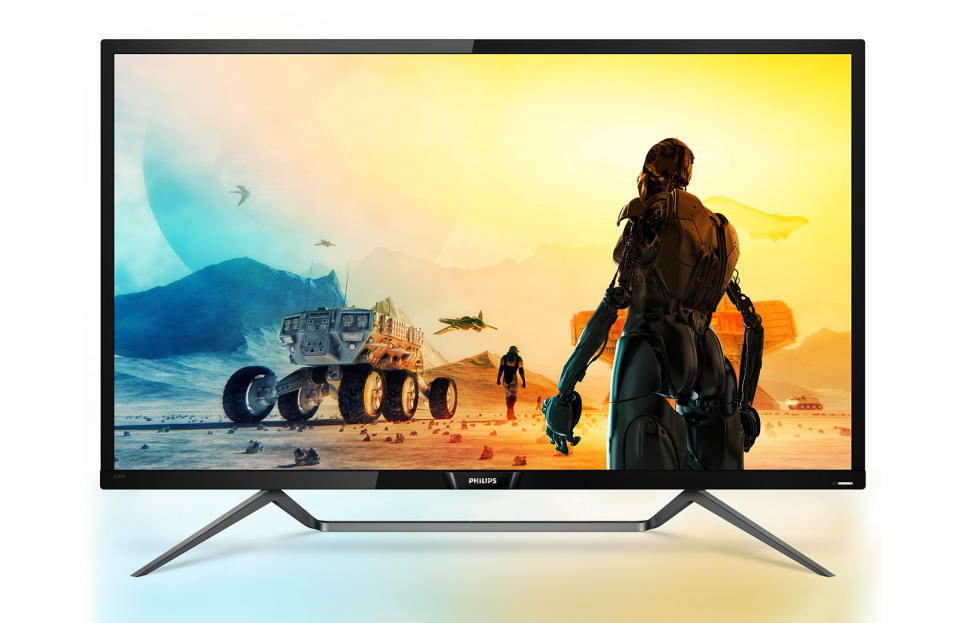Philips' huge 4K monitor is the first with super-bright HDR
With HDR 1000 certification, you get superb brightness and color accuracy.
DisplayHDR certification assures consumers of an excellent standard of monitor performance, but none have received the top level -- until now. Philips' 43-inch Momentum (436M6) is the first to get HDR1000 approval, guaranteeing a superb 1,000 cd/m2 brightness, deep blacks, 10-bit color depth and an HDR-compliant color gamut. To pull it off, Philips used Quantum Dot tech, much like Samsung uses on its QLED TVs and monitors. It also features Ambiglow technology that puts a halo of light on your walls and floor, matching the content on the screen.
The beauty of DisplayHDR is that you don't even need to look at a product's specs to know what you'll get. There are three standards, DisplayHDR 400, 600 and 1000. At the HDR 1000 level, it must put out at least 1,000 cd/m2 of brightness, or 600 cd/m2 over a long duration, around two to four times what you're getting on your current display. All DisplayHDR levels must also support a 955:1 contrast ratio, 10-bits per color of image processing, and cinema-quality color gamuts.

Naturally, these specs are ideal for watching HDR movies on Blu-ray or Netflix, but also for creating such content in the first place. As such, Philips is offering something called MultiView, which lets you simultaneously connect a PC and set-top box, for instance. That way, you can easily switch between watching Stranger Things and, say, color-correcting Stranger Things, if you happen to work on that show.
The Momentum 436M36 isn't cheap at $1,000, but it's in line with the price of other DisplayHDR monitors like the smaller HDR600-certified, $450 HP Pavilion Gaming 32 HDR display. It will arrive sometime this summer.




